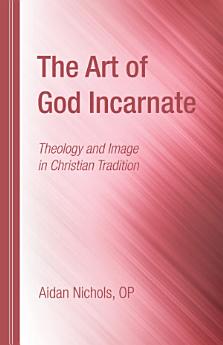The Art of God Incarnate: Theology and Image in Christian Tradition
Apr 2016 · Wipf and Stock Publishers
Ebook
198
Pages
family_home
Eligible
info
reportRatings and reviews aren’t verified Learn More
About this ebook
The Art of God Incarnate proposes that visual art is a good way to think of how the incarnation--the central truth-claim of Christianity--can be said to reveal the divine.
In the book of Genesis, the human being, fresh from the hands of the Creator, is the image of God in the temple of the world. In an environment of distorted images the prophets sought to make visible by symbolic gestures the divine attitude toward Israel, as well as looking forward to a new divine intervention to redeem history and transfigure human lives. For the New Testament faith, this transforming intervention has come about through the restoration of the divine image in man. Jesus Christ is the true and living icon of the Father and the model from whose radiance human beings generally can be re-fashioned.
Despite the anti-iconic legislation of the Hebrew Bible, it was inevitable, therefore, that under the New Covenant a visual art would make its appearance, since God had now made himself visible in his humanized Son. During the iconoclast crisis which shook the Eastern Roman Empire, it was the achievement of the later Greek fathers to spell out this claim doctrinally. Modern aesthetics can throw further light, especially by way of phenomenology and semiotics, on how an artwork can be a communicator of meaning and truth.
Finally, there is the question of how human beings are to make their own this revelation of God in the visual realm. In the Latin tradition, especially among the monastic teachers of the twelfth century, the biblical theme of man made in the divine image and likeness was used to speak of how people can be changed by the fresh resources that revelation provides. Through growth in charity they themselves can become saints, "images" of God.
In the book of Genesis, the human being, fresh from the hands of the Creator, is the image of God in the temple of the world. In an environment of distorted images the prophets sought to make visible by symbolic gestures the divine attitude toward Israel, as well as looking forward to a new divine intervention to redeem history and transfigure human lives. For the New Testament faith, this transforming intervention has come about through the restoration of the divine image in man. Jesus Christ is the true and living icon of the Father and the model from whose radiance human beings generally can be re-fashioned.
Despite the anti-iconic legislation of the Hebrew Bible, it was inevitable, therefore, that under the New Covenant a visual art would make its appearance, since God had now made himself visible in his humanized Son. During the iconoclast crisis which shook the Eastern Roman Empire, it was the achievement of the later Greek fathers to spell out this claim doctrinally. Modern aesthetics can throw further light, especially by way of phenomenology and semiotics, on how an artwork can be a communicator of meaning and truth.
Finally, there is the question of how human beings are to make their own this revelation of God in the visual realm. In the Latin tradition, especially among the monastic teachers of the twelfth century, the biblical theme of man made in the divine image and likeness was used to speak of how people can be changed by the fresh resources that revelation provides. Through growth in charity they themselves can become saints, "images" of God.
About the author
Aidan Nichols, OP was born in Lytham St Annes, England, in 1948, and after studying Modern History at Oxford entered the Dominican Order in 1970. Aside from spells as a chaplain to university students, his work has taken the form of teaching and (especially) writing. He has taught courses in a range of institutions in England, Italy, the United States, Ethiopia, and Australia, and written some sixty books on a wide variety of areas relevant to theology. For most of the last thirty years he has been based at Blackfriars, Cambridge. He is presently working on a study of the revival of Christian art in the nineteenth and early twentieth centuries in Russia, France, and elsewhere.
Rate this ebook
Tell us what you think.
Reading information
Smartphones and tablets
Install the Google Play Books app for Android and iPad/iPhone. It syncs automatically with your account and allows you to read online or offline wherever you are.
Laptops and computers
You can listen to audiobooks purchased on Google Play using your computer's web browser.
eReaders and other devices
To read on e-ink devices like Kobo eReaders, you'll need to download a file and transfer it to your device. Follow the detailed Help Center instructions to transfer the files to supported eReaders.








